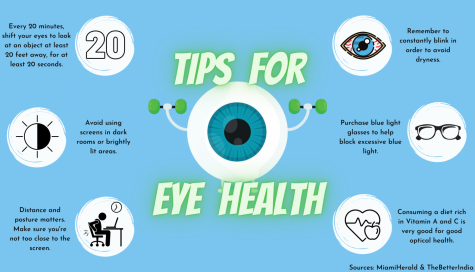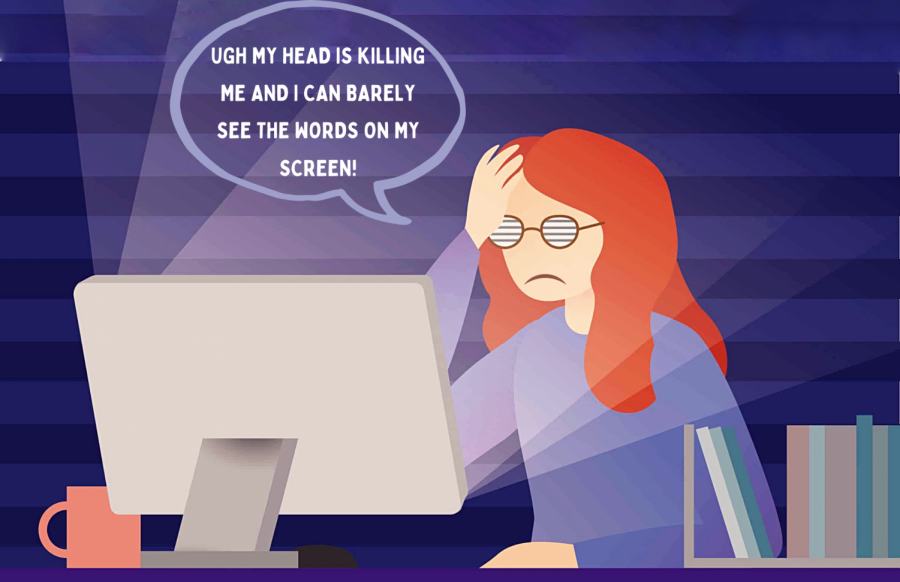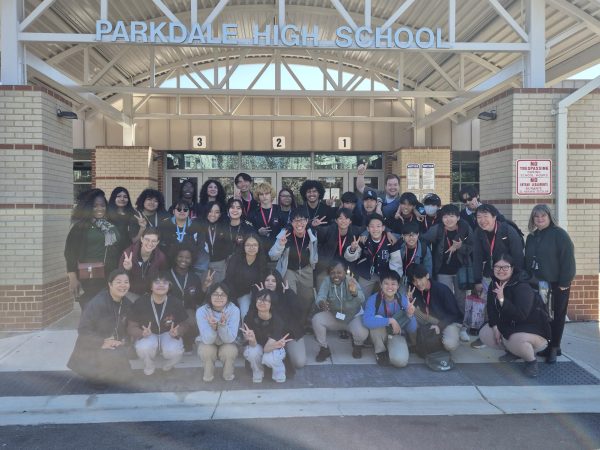Longer classes? Shorter breaks? Virtual learning possibly damaging students’ eyes
As we all know, our bell schedule has changed in order to accommodate those who have returned to school for hybrid learning. Unfortunately, this means our classes, along with our screen time, have become longer and our breaks have become shorter. With an increase in screen time, it’s very likely that students will soon start experiencing a lot of trouble with their eyes. However, the real question is whether this will result in serious eye damage…
The most common eye-related problems include eye strain, blurred vision, dry eyes, and headaches. This is known as Computer Vision Syndrome. Computer Vision Syndrome is used to describe when people experience eye problems or eye symptoms due to the use of digital devices. According to ophthalmologist Dr. Jonathan Feistmann, these symptoms can arise by staring at a screen for long periods of time, which causes a decrease in blinking.
“When we’re on the computer or any type of screen, what happens is that we do not blink as often. We stare,” explained Dr. Feistmann. “When you stare, and don’t blink as often, the eyes become dry and they can become red and irritated. And that’s a big part of the discomfort.”
Along with that, when people stare at one spot for an extended period of time, it can cause their vision to blur temporarily. This causes the muscles around the eye to become tired, which can result in headaches and eye pain. This may also increase the chances of developing eye conditions, such as nearsightedness. Also known as Myopia. Myopia is a “refractive error” that causes people to see blurred images since their eyes do not bend light correctly.
On the other hand, those who already experience problems with their eyes, such as focusing problems or uncorrected farsightedness, are more likely to experience these symptoms. This happens because our eyes are constantly working to keep our vision single, so if there is a coordination problem within someone’s eyes, the muscles in their eye will tend to strain easily.
Evidently, this has caused many people to worry about the long-term effects this could have on them. Since students already spend so much time on their phones and other devices, some feel that virtual learning will only worsen these effects. A few students agree.
“I am worried that the extension of class time will negatively affect my eyes,” said junior Karina Diaz. “It’s terrifying knowing that our way of life right now may be damaging our eyes and there’s not much we can do about it.”
According to ophthalmologist Dr. Laurie Barber, eye discomfort is simply a symptom and it cannot injure the eyes or cause permanent damage. In spite of this, doctors are still very unsure about the long-term effects, so they’re urging students to adjust screen time routines and take “preventative measures” in order to avoid severe eye discomfort.
 As a result, doctors are recommending students to follow the “20-20-20 rule”. The 20-20-20 rule consists of looking away from the screen for 20 seconds every 20 minutes at an object that is at least 20 feet away. Doctors have also pointed out that it’s important to constantly blink your eyes in order to prevent excessive drying of the eyes.
As a result, doctors are recommending students to follow the “20-20-20 rule”. The 20-20-20 rule consists of looking away from the screen for 20 seconds every 20 minutes at an object that is at least 20 feet away. Doctors have also pointed out that it’s important to constantly blink your eyes in order to prevent excessive drying of the eyes.
Nevertheless, experts strongly suggest that students get their eyes examined regularly by an optometrist. Symptoms can sometimes be a sign of something deeper, so it’s important that students get their eyes checked every once in a while. Doctors can also steer students in a better direction towards finding specific remedies that will help them according to their symptoms.
After a year of being glued to our screens, it’s no surprise that virtual learning has been doing us more damage than good. However, with proper care and more attention directed towards our eye health, there is no need to worry about the possibility of any life-threatening or long-term conditions. With that being said, don’t forget to blink!
Your donation will support the student journalists of Parkdale High School. Your contribution will allow us to cover our annual website hosting costs and publish some printed editions, as well.

It all started freshman year when baby Cecilia walked into Ms. G's English class. She was clueless and scared to start high school, but little did she...










